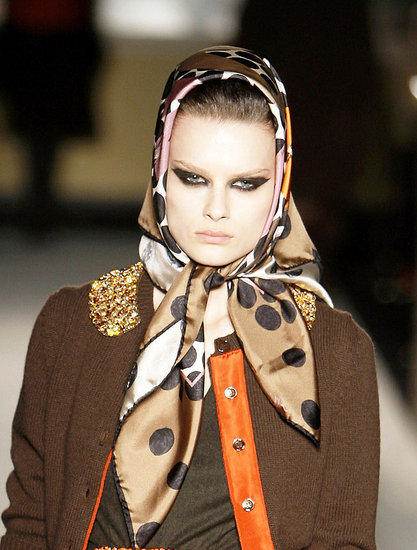
Muslims as a group make up 21% of the world's population. It is the second largest world religion (Christianity being first).
As we learned with Kawamura's "Adoption and Consumption of Fashion" chapter, "fashion has been diffused throughout the global community". After the "consumer revolution", fashion began to market itself to the masses rather than simply the upper class elite. I'd like to argue that with the current trends of globalization, we are experiencing a new sort of "consumer revolution", in which Western fashion is now attempting to market itself to new sects of consumers globally. In some ways this marketing fashion to new groups may seek to abolish their heritage and replace it with Western ideals. However, there is also the very present trend of Western fashion designers appropriating non-Western fashions and then remarketing them to the peoples who orginated them.
I'd like to look specifically at how this relates to Muslim women, who both live in Western societies and in very non-Western societies. Their ideals of fashion for women are vastly different to those of the West. Particularly, the importance of modesty, which is not something I think the West can market to abolish in their societies because it is so deeply connected to their religion (though, then again, it was supposed to be connected to the other Abrahamic religions as well and while certain sects of Judiasm and Christianity still maintain strict mod
 esty for women, it is in the more aethestic urban centers of the West in which religion and feminine modesty do not coincide).
esty for women, it is in the more aethestic urban centers of the West in which religion and feminine modesty do not coincide).In order to open the incredibly large market of Muslim women internationaly to Western fashions, a couple of different approaches have been tried.
First, there is the "designer headscarf". I don't know how many of you have seen this in person, but it is definately a trend in the West, particularly in wealthy areas, as well as in countries like Saudi Arabia and Kuwait (which are also incredibly wealthy) (I'm citing my mother's first hand travel experience here. Her work brings her to Middle Eastern countries often and she loves to report back to me the fashion trends). This is a definate example of "consumption and social status" from our reading. Anything with a logo can be considered conspicuous consumption, as you are readily advertising to the world the cost of whatever it is you are wearing. Designers like Chanel, Louis Vuitton (see photo), and Dolce and Gabanna ha
 ve all used headscarves in their 2008-2009 Winter collections.
ve all used headscarves in their 2008-2009 Winter collections.Then there's actually marketed "modesty" clothing. Street wear label Elenany is just one of many to consciously include more modest styles so that "Anyone can wear these clothes". The case of Elenany is particularly funny to me because their tag line is that they "mix modesty with street cred". Fashion journalists have taken up the charge of advising muslim women how to be fashionable (for example this article). There are also fashion blogs specifically for fashionable Muslim women, like Hijabstyle, Hijabfashionista, and The Hijab Blog. For real Muslim street fashions be sure to check out Hijabs High.
Here is an interview with the designer of Elenany, addressing issues of making the Muslim community "fashion forward".
-Alison Tanner
Blog 4
No comments:
Post a Comment